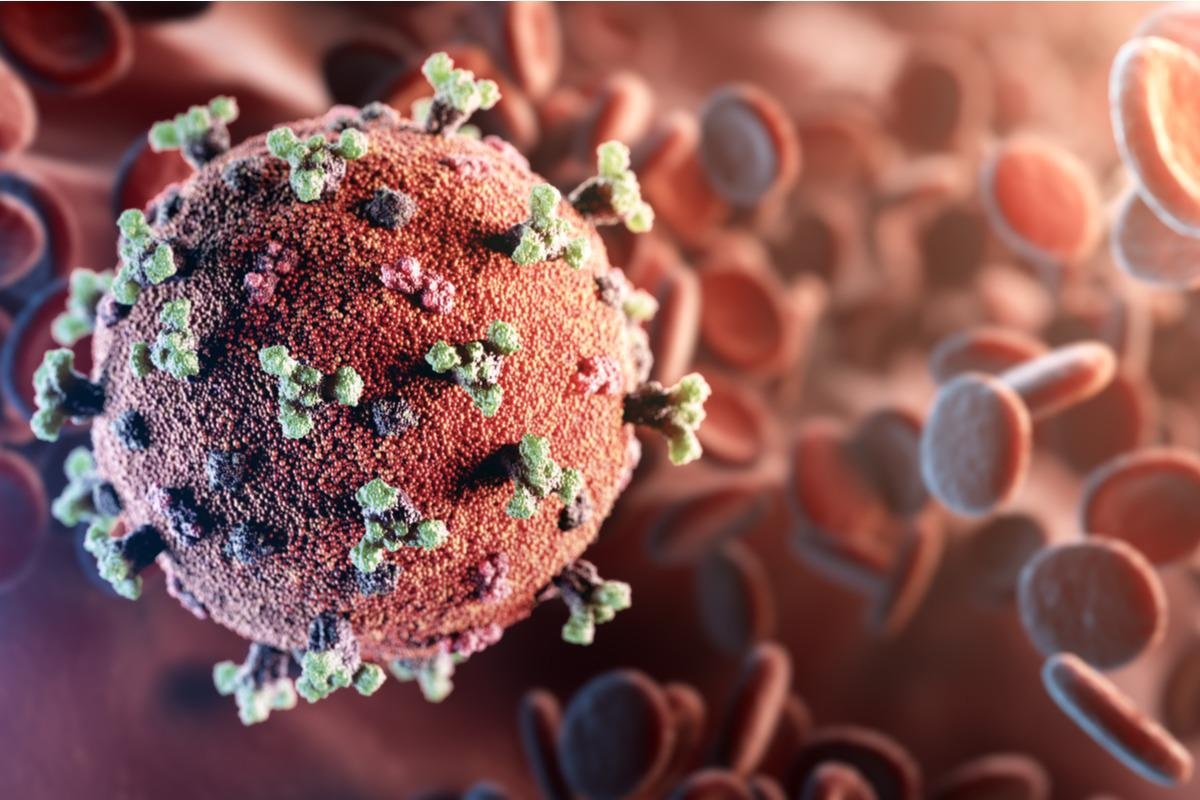The spike protein (S) of the severe acute respiratory syndrome coronavirus 2 (SARS-CoV-2) is a major structural protein and is therefore involved in several interactions involving host infections. The S protein binds to the human angiotensin-converting enzyme 2 (hACE2 or ACE2) receptor on the cell surface and initiates infection using the receptor-binding domain (RBD).
 Study: SARS-Cov-2 Spike binding to ACE2 is stronger and longer ranged due to glycan interaction. Image Credit: creativeneko/Shutterstock
Study: SARS-Cov-2 Spike binding to ACE2 is stronger and longer ranged due to glycan interaction. Image Credit: creativeneko/Shutterstock
There have been significant efforts directed at understanding the host-virus interaction both experimentally and computationally. Such studies pave the way for developing improved and efficient tests and therapeutics, including vaccines. Viral structural proteins like S are often glycosylated to help pathogens evade the host immune system, modulate access to proteases, and modify protein structure to enhance the cellular attachment at the virus-host interface. Furthermore, many mammalian viruses use glycans on cell-surface glycoproteins or glycolipids as receptors.
Despite the importance of glycans in virus-host interactions, the glycans themselves are only partially understood in experimental structures generated from experimental techniques such as CryoEM. Computational modeling of these glycans is therefore helpful in predicting their behavior and structural contributions.
Researchers expected that since both S and ACE2 were glycosylated, the interaction was possibly modulated by the glycans. Previous computational studies have explicitly considered the glycosylation of the receptor and/or the virus into account as glycosylation has only very recently become a stronger focus in simulations.
Previous studies have developed a fully glycosylated model for the SARS-CoV-2 RBD and ACE2 proteins with different glycosylation patterns. As the next step to published results, researchers published a report in the Biophysical Journal (currently in pre-proof), describing a model to explore how a combination of complex glycans impacts the energy and duration of viral binding. They focused on the contribution of these different glycosylation patterns on the interactions between proteins via hydrogen bonding, interaction energies, and determine the corresponding free energies.
About the study
Researchers expanded on the previously developed model of fully glycosylated ACE2-Fc and SARS-CoV-2 spike protein fragments using molecular dynamics and computer simulations. They expanded the model by investigating the binding strength and role of glycosylation on binding between these groups. This investigation provided further evidence that binding of SARS-CoV-2 spike and ACE2 receptors were aided by the glycosylation on each protein.
Researchers used computational modeling to discover that multiple, complex, glycans that strengthened the interactions between RBD and ACE2 and helped them become longer ranged. Protein-protein interactions were extended owing to the increased stability provided by the glycans and binding strength was affected by a catch-slip behavior between the glycans. These computational results were corroborated by experimental evidence that the magnitude of the binding energy-reduced for de-glycosylated proteins.
Detailed mechanistic studies of binding interaction events like the one discussed here can improve our understanding of the impact of specific changes to proteins on their binding strength. Differences in binding dissociation rate could also affect infectivity. Viral protein and host receptor interactions are complex due to the interplay between interaction types, different degrees of motion during a binding event, as well as the role of glycans in shielding or strengthening receptor binding. SARS-CoV-2 spike protein and ACE2 interactions are no different. The study also showed that dominant interactions were between hydrogen bonds, but Lennard-Jones and electrostatic interactions were relevant as well.
Implications
Studies to demonstrate molecular dynamics in virus-host interactions are of prime importance in therapeutic research. Understanding the implications of different glycans on the binding behavior of the spike could prove useful as the SARS-CoV-2 continues to mutate with more emerging variants of concern, with potentially different glycosylation patterns.
Recent studies have shown experimentally and computationally that the ACE2 and RBD of coronavirus spike fragments have different binding strengths and dissociation rates when they are glycosylated and non-glycosylated.
This is particularly important to produce improved rapid tests where viral antigens may be made in a variety of hosts with different glycan distributions.